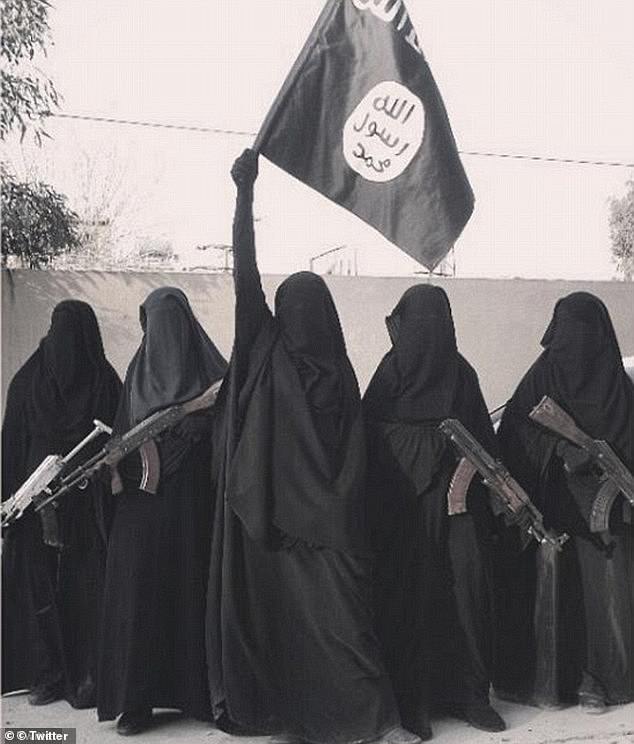
By Lora Vonderhaar
Recent studies of women’s roles in jihadi terrorism debunk the widely held belief that women are either passive victims or fanatical jihadi brides. Women participate – both willingly and unwillingly – in terrorist activities for a variety of reasons. Women’s participation in jihadi terrorism is not binary, it is a spectrum of motivations, grievances, and agency – or the lack thereof. More importantly, terrorist groups have begun to see the advantages of incorporating women into their tactics and operations. Women not only mother the next generation of fighters, they attract less attention at security checkpoints, their deaths garner more media attention, and the violence perpetrated by women is exploited to shame men into more violent and drastic acts.
Boko Haram‘s strategy to exploit women can be traced back to 2014, a full year before the Islamic State of Iraq and Syria (ISIS) began doing the same. Women can access soft, urban targets – such as markets and schools – more easily and inconspicuously than men. Women can also bypass detection and searches, since a male security agent cannot search a woman. Once discovered, Boko Haram used this tactic to its full advantage, dressing male fighters as women to avoid suspicion. As the group soon realized, female suicide bombers carry with them an element of surprise that suicide attacks carried out by men could not rival. Additionally, female deaths evoke more sympathy from the international community, which in turn garners more media attention for the group and their narrative. In addition to suicide bombings, Boko Haram kidnapped women and young girls – such as the Chibok school girls – and systematically used rape to destroy trust and unravel the social fabric of local communities. Seen in many cultures as carrying the honor of the family, men are seen as a failure if they are unable to protect their female family members. In many of these situations, these violated women are ostracized from their families and communities. This ostracism leads to mental health challenges, high rates of abortion and suicide, as well as the lack of freedom of movement, which denies women the ability to earn a living on their own. Boko Haram’s actions not only cripple the local communities, but they also instill fear, thereby assuring the complacency of the locals and their submission to Boko Haram’s rule.
ISIS also quickly saw the advantages associated with recruiting women. Besides serving as wives to fighters and as mothers to the next generation of jihadi fighters – passing on the radical ideology to their children – ISIS has also capitalized on the usefulness of women for recruitment and propaganda, specifically through online methods and social media. Both willingly and unwillingly, women in ISIS recruit other women to join the caliphate, serving as a huge boon to ISIS’s organization. Female converts to Islam from Europe, the Americas, Australia and New Zealand are especially valuable to ISIS as suicide bombers because this keeps ISIS from having to use local girls and women for such missions which would negatively impact their recruitment and messaging of upholding Sharia Law. These women from the Global North can feel pushed from their Western homes because they feel isolated in their own Western communities, or because they see the suffering of the international Muslim community and are angered by the lack of response to such injustices. Conversely, they can feel drawn to ISIS because of ideological goals of building the Caliphate, the allure of sisterhood, or the thrill and romanticism of the experience.
Practically, Zarqawi needed wives and mothers in order to build his caliphate. But even more importantly, women joining ISIS of their own volition – especially well-off, highly educated Western women – legitimized ISIS’s struggle. Suddenly, women were no longer seen simply as the ‘makers of men,’ they were also included in spectacular terrorist attacks which garnered international media attention, thereby compelling competing terrorist organizations to ramp up the frequency and intensity of their own attacks. But perhaps the most impactful repercussion of women joining the fight and contributing to the violence was women’s superior ability to avoid detection, carry out successful attacks, and then shame men into action – something that Zarqawi readily capitalized on.[19] If the situation is so bad, if society has grown so corrupt and immoral that women must throw themselves into the fight, must die for the cause – Zarqawi could argue – then clearly men are not doing enough to fulfill their moral duty of waging jihad.
In the ever-changing political climate of U.S. – Afghan relations, it is imperative that we, the United States, learn from the past to better prepare for the future. ‘Women’ must not be seen as a homogeneous entity, and counter-narratives should address directly the various push and pull factors that lead Western women to join ISIS. With the Taliban now in control of Afghanistan, we must prepare for the possibility that the country becomes a safe-haven to terrorist groups yet again. Should this happen, we must do everything in our power to weaken these organizations so that their stated goal of violence does not reach American borders or threaten innocent lives. America and the West must invest in counter-messaging campaigns and pro-social interventions directed at young women at risk of joining ISIS. In doing so, we can deny ISIS one of their most undervalued and yet most powerful weapons for propaganda and recruitment: Women.
